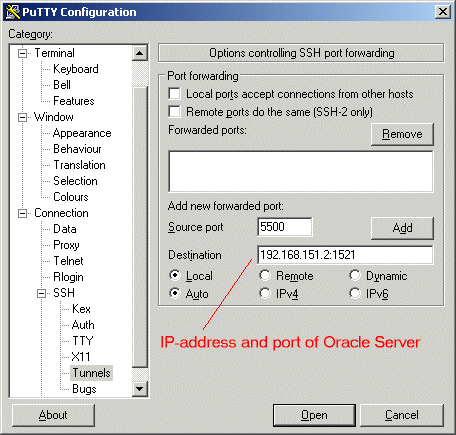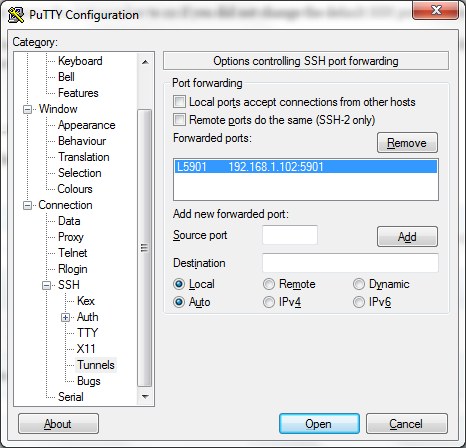
That’s it! Handy for Australians to get access to different web content and pricing. If something isn’t configured correctly, you’ll more likely see a browser error like “The proxy server is refusing connections”. Try again to get to – if all is working, you’ll see a different IP address which is from the server you’re SSH’d to. Press OK twice to get back to the main view of the Firefox Browser. Choose the “Manual proxy configuration” radio button, and under SOCKS Host enter “127.0.0.1” and the port you entered into Putty (in my case it’s 9870). Under the “Advanced” area, go to the “Network” tab and in the “Connection” area click the “Settings” button.ħ. In Firefox, press the ‘alt’ key to bring up the top menu and go into Tools > Options. Open Firefox, and go to the website – take note of your external IP address, because this should change once you’re tunnelling through SSH.Ħ. You only need to log on with your credentials and get to a bash prompt.ĥ. Click “Open” and log onto your SSH session.

You can save your session to load later rather than retyping the details:Ĥ. Then click ‘Add’ and you’ll get an entry under “Forwarded Ports”:ģ. From this area, add in a source port (I’ve chosen 9870 but this can be any unused port), and choose ‘Dynamic’. From Putty, go down to Connection > SSH > Tunnels.

If you can log in to that, then the SSH component works and you’re good to go for the rest of this.Ģ. You’ll need Putty (available at ) – from the Session screen, put in your hostname, most likely port 22 for SSH, make sure SSH is selected as the connection type and click ‘Open’ at the bottom of the screen.

I tested this on my Bluehost account, and it worked perfectly. The reason I wanted to do this one was viewing a site from an American IP address rather than an Australian.


 0 kommentar(er)
0 kommentar(er)
